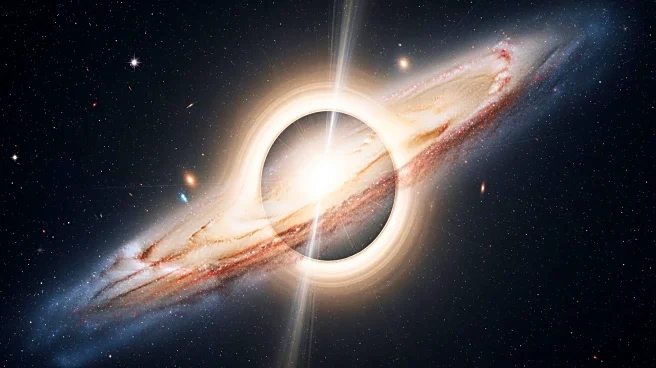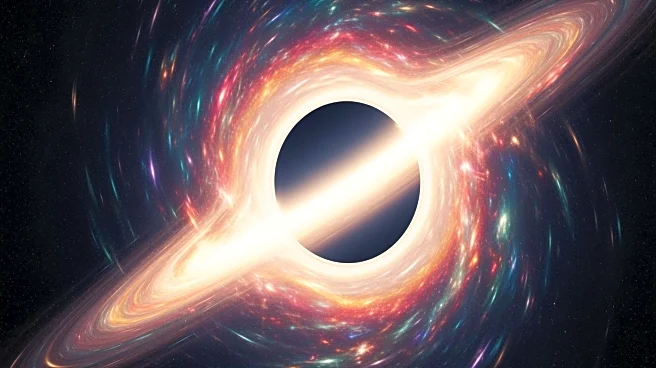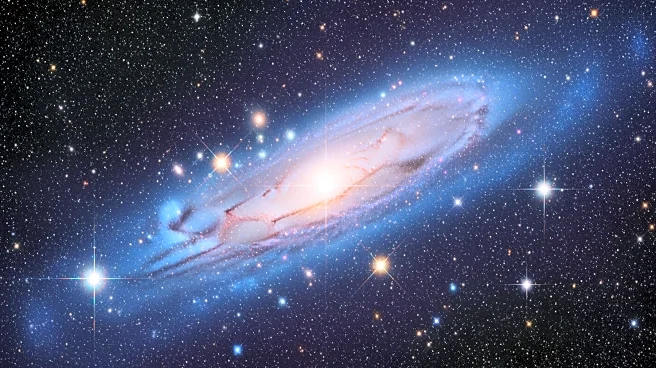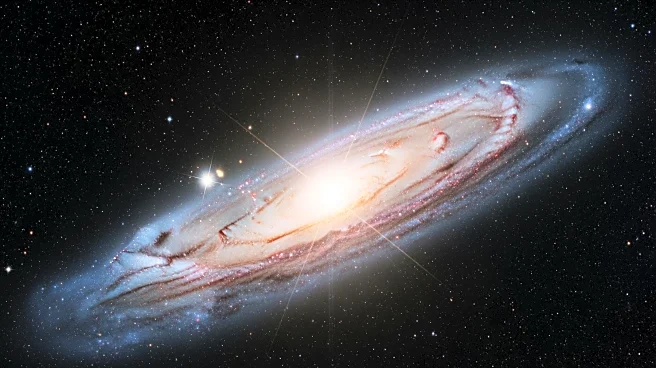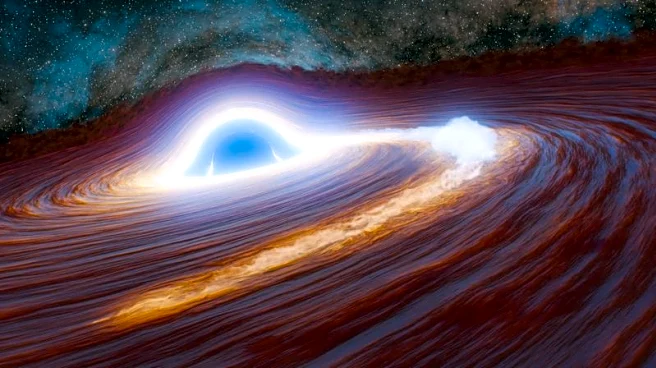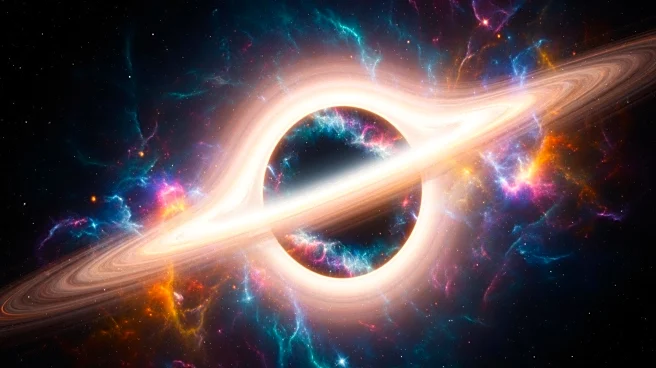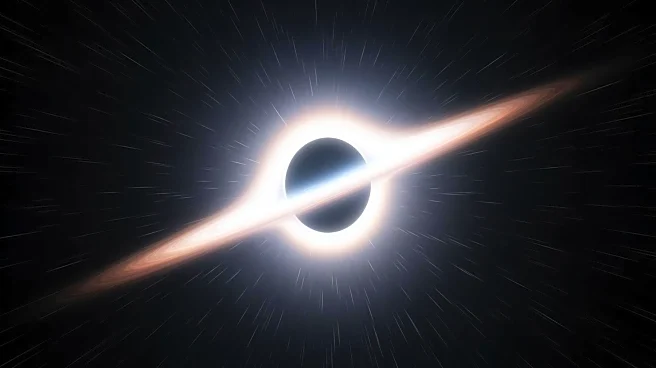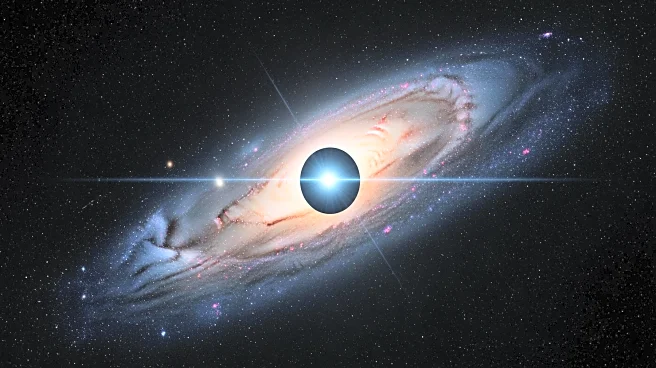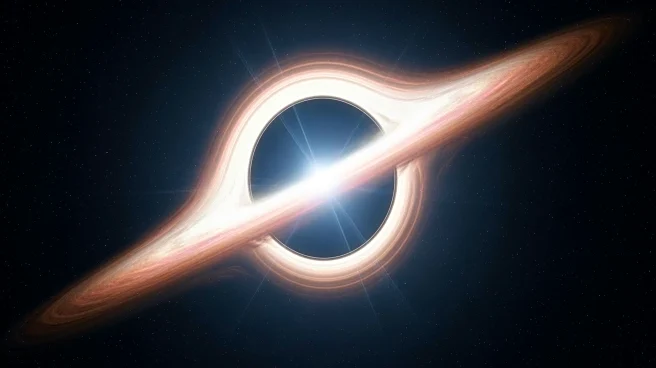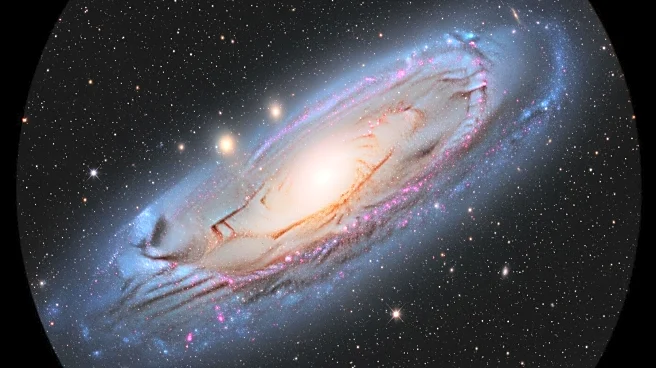What's Happening?
Astronomers have detected the largest and most distant black hole flare ever observed, originating from the galaxy J2245+3743, located 10 billion light-years away. The flare, discovered using the Zwicky Transient Facility, resulted from a massive star
being consumed by a supermassive black hole, which is 500 million times the mass of the sun. This tidal disruption event has produced a flare with the energy equivalent to 10 trillion suns. The flare was first observed in 2018 and has been gradually fading, indicating the ongoing consumption of the star by the black hole.
Why It's Important?
The detection of this flare provides valuable insights into the nature of supermassive black holes and their interactions with surrounding matter. It challenges existing models of black hole behavior and highlights the potential for such events to occur across the universe. The flare's unprecedented brightness and energy output offer a unique opportunity to study the processes involved in tidal disruption events, which are critical for understanding the role of black holes in galaxy evolution. This discovery underscores the importance of long-term astronomical surveys in uncovering rare cosmic phenomena.
What's Next?
Researchers will continue to monitor the flare as it fades, using data from various observatories to gain further insights into the dynamics of the event. The ongoing study of this flare will contribute to a better understanding of the mechanisms driving tidal disruption events and the behavior of supermassive black holes. Future observations may reveal more about the frequency and impact of such events in the universe, potentially leading to new discoveries about the formation and evolution of galaxies.
